March 14, 2023
Pick up a straw. Breathe in and out through the straw. That's resisted breathing. Consider it to be weight training for your lungs.
Now go for a swim. Experience what happens when you breathe every 5 or 7 strokes instead of every 1 or 2 strokes. That's restricted breathing, which sends a clear message to your body that oxygen molecules are few and far between.
Finally, go climb a mountain or crawl into an altitude tent. That's hypoxic training, in which the air is truly thinner and you're actually pulling less oxygen into your body.
Resistance breathing enhances your endurance by strengthening your inspiratory and expiratory muscles, which increases your ventilatory capacity (your lung size). Hypoxic training not only strengthens those same respiratory muscles, but also results in:
-improvements in oxygen uptake, transport, and utilization.
-production of neuroendocrine hormones that can have an anabolic training effect.
-improvements in immune system strength.
-increased activities of antioxidant enzymes in the brain, liver, heart, and other organs (assuming you don't overdo it, in which case you actually get suppression of normal antioxidant processes).
-as you'd probably guess, increased production of red blood cells, resulting in increased oxygen-carrying capacity of the blood.
Finally, restricted breathing actually gives you a bit of the benefit of both resisted and hypoxic training.
So why am I telling you all this?
While I certainly have been a fan of activities such as swimming laps and breathwork for restricted breathing, and also a fan of strategies such as intermittent hypoxic training (IHT) for hypoxia breathing benefits, I've lately been getting a ton of physical and mental benefits from resistance breathing, and have been experimenting with a wide range of resisted breath training devices to make my lungs “strong like bull”, so to speak.
In this article, I'll fill you in on why you should do resistance (also known as resisted) breath training, and some of the best tools I've found for doing so.
Why Do Resisted Breathing?
You may believe, as many people do, having “strong lungs” is important for good breathing…
…but that's not quite true.
Your lungs are really just air-filled bags that can't be made stronger. Instead, it's the muscles responsible for filling up those bags, like the diaphragm and intercostal muscles, that can be strengthened with specific exercises to improve your body's ability to use and distribute oxygen.
Many athletes especially understand the importance of controlled breathing for optimal performance. Swimmers, runners, scuba divers, and yogis often practice diaphragmatic breathing to stretch and strengthen their diaphragm muscles, which do most of the work involved in breathing. Instead of breathing with their chest, they breathe through their nose and let their midsection expand, which stretches and strengthens the diaphragm. To exhale, they use their mouth and contract their abs towards their spine.
Breathing exercises, like other practices such as meditation and stretching, take effort and consistency for results. People often forget to breathe while lifting weights or during other intense activities, but practicing breathing exercises like nasal breathing, pursed-lip breathing, four-square breathing, and Buteyko breathing during strenuous physical work can make a big impact on your results.
Recently, more and more breath training tools and gadgets have hit the market. Research such as this study from the Journal of Strength Conditioning and Research shows these devices are effective ergogenic aids for sports performance. Breath training tools help increase airflow resistance, making breathing harder, strengthening the diaphragm and respiratory muscles, and reducing breathlessness and exertion.
Breath trainers can also hold you accountable for breathing and make it more challenging, leading to noticeable gains over time – whether you're looking to run a marathon or go up a flight of stairs without panting.
As of late, I've been actively seeking various tools and gadgets that can help me enhance my breathing and overall wellness. These resources have allowed me to try different breathing techniques and maintain a consistent breathing practice. Incorporating breath training tools into my daily routine has significantly impacted my stress level, performance, recovery, sleep, and more.
Below, I'll introduce you to nine breath training tools and gadgets that can improve various aspects of your life, such as athletic performance, sleep, stress level, recovery, and overall health.
Breath Training Tool #1: TrainingMask
TrainingMask 3.0 is a performance breathing trainer designed to improve respiratory conditioning, fitness, and recovery during workouts.
By conditioning your lungs and creating pulmonary resistance, your diaphragm is strengthened, making your lungs work more efficiently. When your lungs work harder, the surface area and elasticity in your lungs' alveoli are increased, which increases your ability to utilize oxygen, your stamina, and your ability to go harder at your sport – or to simply have increased energy for daily living.
But let’s get something straight: many resisted breathing devices are marketed as hypoxic training devices, and even the TrainingMask used to be called the “Elevation TrainingMask” until they switched up their monkier, and rightly so. These devices are not simulating altitude at all and do not result in any hypoxic adaptations.
Most of these masks, which look like a Swat team gas mask or the Batman villain Bane, cannot (despite some manufacturer claims) actually change the atmospheric pressure that you’re training in. Fact is, when you're charging down the treadmill sporting your scary-looking altitude training mask, you're still breathing air that is approximately 21% oxygen, with the same partial pressure of oxygen as whatever altitude you happen to be at. Most masks are simply restricting your breathing by covering up your mouth and nose. These masks can certainly be effective for improving ventilatory capacity, but don't result in the same physiological adaptations as true hypoxic training in a low O2 environment.
But these masks are useful, allowing for on-the-fly airflow adjustments, and increasing or decreasing the load on breathing muscles in real-time based on the demands of the workout.
TrainingMask 3.0 helps you break through cardio plateaus by increasing your respiratory compensation threshold (RCT). When RCT is reached during high-intensity activity, lactate levels cause heavy respiration and signify the transition point where fatigue starts to overcome the body’s ability to sustain exercise intensity. By increasing RCT, TrainingMask 3.0 allows the body to generate more effort before the point of exhaustion is reached, which means better performance during workouts.
As a result, you'll feel as though you've grown a third lung and will have a distinct advantage in your workouts, races, and competition. You also look pretty badass wearing one.
Usage tip: do a set on the treadmill, bike, rowing machine, etc. in which you go as hard as possible for 1 minute, then pull the mask down around your neck, recover with full breath for 1 minute and repeat for 5-10 rounds.
Breath Training Tool #2: Relaxator
 If you have a certain type of mouth and airway anatomy, you may find it hard to get enough air with every breath.
If you have a certain type of mouth and airway anatomy, you may find it hard to get enough air with every breath.
Select dental practices such as Pure Holistic Dental offer an airway analysis with a team of IAMOT and SMART-certified dentists to identify any issues that may be affecting breathing.
Those practices often offer a product called the Relaxator to improve your breathing (if you qualify).
The Relaxator is designed to improve the function of the respiratory muscles and train the diaphragm. When you inhale, the diaphragm contracts and moves downward, creating space for the lungs to expand and fill with air. When you exhale, the diaphragm relaxes and moves upward, forcing the air out of the lungs.
The device works by creating resistance to airflow during inhalation and exhalation. When you breathe through it, the resistance forces the respiratory muscles to work harder to inhale and exhale. Over time, this increased resistance helps to strengthen the respiratory muscles, making them more efficient and giving you the ability to take deeper breaths.
By training the respiratory muscles to work more efficiently, the Relaxator helps to improve oxygen uptake in the body. This, in turn, can lead to better heart function, reduced stress and anxiety, and improved overall energy and endurance.
James Nestor is a journalist and author who wrote the best-selling book Breath: The New Science of a Lost Art about the benefits of proper breathing techniques. When I interviewed James for my podcast (listen here), I talked about how I went on really long walks with the Relaxator. I also got my twin boys each a Relaxator and taught them how to breathe through their noses during the walk.
Usage tip: go for a walk and keep it in your mouth the whole time. When I first got one, I couldn't walk any longer than 10 minutes without getting short of breath, and can now easily walk 60 minutes and get a massive breath muscle training session in at the same time.
Breath Training Tool #3: PowerLung
PowerLung is a hand-held device that offers a form of resistance training for your breath.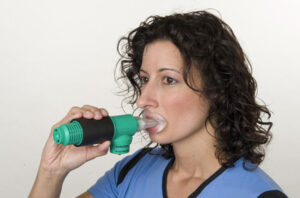
Independent studies have shown that using PowerLung can increase lung capacity and improve breathing, allowing you to perform better in activities such as racing, diving, and exercising.
When you breathe in and out through PowerLung, you're working against the same resistance for every breath. You are not breathing through a restricted orifice where the load can be reduced by changing how you breathe. That is “threshold resistance,” or the proven training method used by PowerLung.
Just like any other muscle in your body, the best way to make the muscles that support your breathing stronger and more efficient is to strength-train them. Imagine someone who trains or exercises with weights, machines, or exercise bands. When a person is training, they must “work” against something – in this case, an external resistance.
The external resistance is the weight that the person is lifting and lowering. The weight creates a force that the muscles must work against and overcome. The more a person repeats the exercise pattern against this force, the stronger his or her muscles become. As it becomes easier to do the exercise, the person can increase the force, intensity, or threshold to help make the muscles stronger. So, using PowerLung is much different than breathing through a straw that allows you to control the amount of resistance.
Usage tip: keep this in your bag, purse or glovebox and practice when you're sitting around and have a few minutes for breath training, such as waiting for the flight in an airport, sitting in traffic, etc. Just don't pass out if you're driving, please.
Breath Training Tool #4: Airofit
 Featuring a virtual breathing coach, Airofit. provides personalized training programs based on measurements of lung performance.
Featuring a virtual breathing coach, Airofit. provides personalized training programs based on measurements of lung performance.
As a result, the programs it provides are customized to your specific needs, goals, and lung condition.
Airofit also allows you to track your progress over time. The mobile application records data on each breathing session, including the volume of air inhaled and exhaled, the length of the breaths, and the strength of the breaths. Monitoring these metrics over time allows you to see your progress and adjust your training regimen as needed.
In addition to improving respiratory strength and endurance, Airofit can also be used to improve sleep quality. The device includes a “sleep mode” feature designed to train the respiratory muscles to work more efficiently during sleep. Using the device before bedtime can improve your breathing patterns and reduce the likelihood of snoring or other breathing-related sleep issues.
The versatility and ability of Airofit to be used across various sports and industries make it a valuable tool for a wide range of people looking to improve their respiratory function and overall health.
Another notable aspect of Airofit is its commitment to social responsibility. The company donates a portion of its profits to the Women's Sports Foundation, which helps support women and girls in sports.
Usage tip: Keep it next to your bedside and start or end the day with some resisted breathwork, guided by the handy Aerofit app.
Breath Training Tool #5: TrainMaximus
TrainMaximus is a resistance-breathing trainer device designed to enhance physical performance by deep resistive breathing during exercise.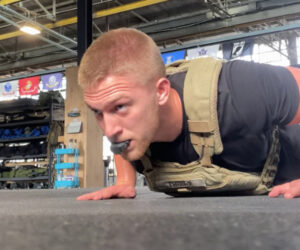
TrainMaximus is a force multiplier that places a greater load on the cardiorespiratory system, heart, lungs, and vasculature.
After eight weeks, prototype users who added TrainMaximus to their routine saw a 24% increase in endurance and 43% in strength. (However, it's important to note that results may vary depending on baseline fitness, frequency of device use, resistance levels employed, duration of training sessions, and intensity of training sessions.) Dual Airflow Resistance Technology (DART) in the TrainMaximus allows you to adjust airflow resistance equally during inhaling and exhaling to rapidly and optimally increase fitness and boost performance.
TrainMaximus is ergonomically designed to be worn comfortably under a face mask while exercising or practicing sports, allowing for a sport-specific cardiorespiratory workout.
While highly competitive athletes may not see the same level of gains as prototype users, TrainMaximus has the potential to enhance physical performance regardless of your fitness level.
Usage tip: pair with BFR bands and crank out a bodyweight workout of pushups, squats, lunges, pull-ups, etc. to transform bodyweight training into a whole different beast.
Breath Training Tool #6: BasRuttenO2
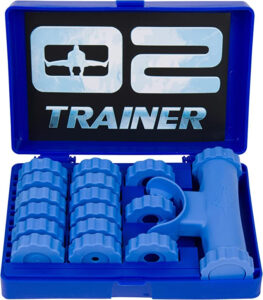 The BasRuttenO2 trainer is a state-of-the-art fitness device that provides an effective mixed martial arts workout.
The BasRuttenO2 trainer is a state-of-the-art fitness device that provides an effective mixed martial arts workout.
The system features a Head Pad and a Torso Pad that allow users to perform uppercuts, hooks, punches, elbows, and knees with proper form.
The Deluxe and X2 models include additional Focus Pads and T-Bars for side-to-side striking and advanced core training. The highly customizable device can be adjusted to accommodate your size, providing a real sparring partner experience and an all-in-one device for an optimal workout.
The BasRuttenO2 trainer comes equipped with the XLINK Wearable 4 Tracker Systems that monitor upper and lower body movements simultaneously, analyzing and scoring training sessions for individual feedback. The XLINK on-demand training experience challenges you with advanced combinations of martial arts techniques to improve power, cardio, and confidence.
The system also has a free iOS or Android app that offers video coaching, ongoing feedback, and a diverse range of martial arts genres. With the 4 Tracker technology, you can track and measure your progress with speed, rate, endurance, and power.
No membership is required to use the BasRuttenO2 trainer, making it an accessible and convenient option.
Usage tip: keep it on your desk and do passive resistance breath training while working on e-mails, etc. on your computer – effective multitasking indeed!
Breath Training Tool #7: AIRWAAV Performance Mouthpiece
By optimizing breathing and reducing stress on the body during exercise, the AIRWAAV Performance Mouthpiece can improve athletic performance and recovery.
The mouthpiece is built to support both strength and conditioning work, making it a versatile tool for athletes looking to improve their overall performance.
The tongue plays a critical role in the functioning of the respiratory system, as it helps to create and maintain an open airway. The design of the AIRWAAV Performance Mouthpiece takes advantage of this fact by directing the tongue down and forward, creating an optimal airway opening that can reduce your respiratory rate by up to 20%. Reducing respiratory rate can help improve muscular endurance, as less energy is expended on breathing, allowing you to perform at a higher level for longer.
In addition to its benefits during exercise, the AIRWAAV Performance Mouthpiece is also designed to support recovery by reducing cortisol levels (up to 50%!) and other stressors on the body. Its patented design triggers a reflex that opens the airway by up to 25%, which can aid in recovery by reducing the strain on the body and improving overall relaxation.
Usage tip: take on your next long bike ride or hike for added oxygen training benefits with a minimalist device.
Breath Training Tool #8: Hostage Mouth Tape
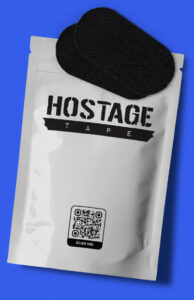 Mouth breathing during sleep is a leading cause of many negative consequences including:
Mouth breathing during sleep is a leading cause of many negative consequences including:
- Snoring (leading cause)
- Bad breath (halitosis)
- Chronic fatigue
- Brain fog
- Chronic stress and anxiety
- Increased blood pressure
- And even increased risk of divorce
When you breathe through your mouth, you bypass the natural filtration system that occurs in the nose. The nose is designed to filter, humidify, and warm the air before it enters your lungs, protecting your body from harmful particles and irritants in the air. By breathing through the mouth, you inhale these particles directly, which can lead to inflammation of the airways, congestion, and other respiratory issues. Mouth breathing can also lead to a dry mouth, which can cause bad breath and increase the risk of tooth decay and gum disease.
Additionally, mouth breathing during sleep can disrupt the balance of oxygen and carbon dioxide in the body. Breathing through the nose allows your body to regulate these gases more effectively, maintaining a healthy balance. When you breathe through the mouth, however, your body has to work harder to regulate these gases, leading to decreased oxygen levels and increased carbon dioxide levels.
In James Nestor's book Breath: The New Science of a Lost Art, he shares his experience with mouth breathing and its negative effects on his health. During a 30-day experiment at Stanford University Medical Center, Nestor plugged his nose and only breathed through his mouth, leading to snoring, sleep apnea, and dangerously low blood oxygen levels.
After the experiment, Nestor researched the benefits of nose breathing and discovered the use of mouth tape as a solution to help people with mouth breathing during sleep.
Hostage Mouth Tape, based on the principles Nestor discussed in his book, is designed to keep the mouth closed during sleep and promote nose breathing, potentially preventing snoring and improving overall sleep quality. The tape is strong and comfortable enough to stay put all night, even if you have facial hair or a strong jaw. It also comes with a 30-day money-back guarantee, allowing you to try it out risk-free.
Usage tip: just try it, for at least a week. Mouth-taping seems like a total pain in the butt at first, but most people notice profound sleep benefits once they get used to it.
Breath Training Tool #9: Rhinomed Nasal Dilator
The Rhinomed Nasal Dilator is designed to help you breathe more easily through your nose.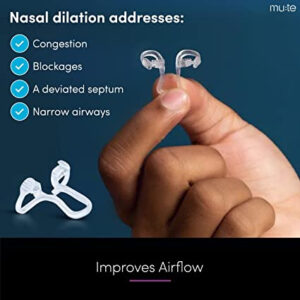
Nasal dilation has many health benefits, including:
- Increased airflow. Nasal dilation helps open the nasal passages, allowing greater airflow through the nose. This can be particularly helpful during physical activity, as it can increase the amount of oxygen that reaches the lungs, improve breathing efficiency, and reduce the work of breathing.
- Improved breathing patterns. By improving airflow through the nose, nasal dilation can help promote more natural breathing patterns, reducing the risk of breathing-related issues such as snoring, sleep apnea, and chronic mouth breathing.
- Enhanced sleep quality. Nasal dilation can also be beneficial for improving sleep quality. Increasing airflow through the nose can reduce the likelihood of snoring and sleep apnea and help you breathe more easily and comfortably throughout the night.
- Better overall health. By promoting more natural breathing patterns and reducing the risk of breathing-related issues, nasal dilation can help to improve overall health and well-being. It can also be particularly beneficial if you have respiratory conditions such as asthma or allergies, as it can help to reduce congestion and make breathing easier.
There are two different Rhinomed Nasal Dilator devices available: Mute and Turbine.
Mute is designed for use during sleep and can help with congestion, blockages, a deviated septum, or narrow airways that can contribute to snoring or sleep disruption. Mute sits inside the nose, gently opening the airways to increase airflow and improve breathing. The device can be used up to 10 times before needing to be replaced if you follow the cleaning and storage instructions.
The Turbine, on the other hand, is designed for use during physical activity, such as sports, yoga, or meditation. The device fits inside the nostrils and gently opens them to allow more airflow, resulting in greater breathing efficiency. The Turbine is comfortable to wear and can help improve athletic performance or breathing techniques during focused activities.
Both devices are designed to be easy to use, non-invasive, and effective in helping people breathe more freely through their noses.
Usage tip: combine with mouth taping for better nasal flow, OR try it while on a bike ride or run to experience a big increase in airflow, especially if you tend towards congestion.
Breath Training Tool #10: Nemstar
 This final breath training tool I recommend is called the Nemstar breathing trainer.
This final breath training tool I recommend is called the Nemstar breathing trainer.
The Nemstar is made with adjustable resistance levels to increase lung capacity and improve your overall physical stamina.
Ventilation – the movement of air in and out of the alveoli – is comprised of two stages: inspiration (inhalation) and expiration (exhalation).
When you inhale with resistance:
- The diaphragm contracts and flattens downwards
- The external intercostal muscles contract, pulling the ribs up and out
- The volume of the thorax increases
- More air is delivered deeper into the lungs
- The lung and alveoli volume increases
- More oxygen is absorbed
When you exhale with resistance:
- The abdominal muscles contract, pushing the diaphragm upwards
- The internal intercostal muscles contract, pulling the ribs downward
- This gives a larger and faster expiration
- More CO2 is expulsed
Nemstar uses a multi-level resistance dial which reduces the amount of airflow to the lungs, forcing you to take more focused and deeper breaths during inhalation and exhalation. In essence, you inhale more oxygen, and you exhale more carbon dioxide. The result is a substantial improvement in shortness of breath and endurance through better breathing.
Usage tip: Find the resistance level where your exhale finishes at the same time you get the impulse to inhale. Then, repeat breath sequence this several times, resting in between. Once you get the hang of it, try this while riding an exercise bike, running on the treadmill, rowing, etc.
Summary
Now you understand that your lungs themselves can't get “stronger,” but the muscles responsible for filling the lungs, such as the diaphragm and intercostal muscles, certainly can.
Practices such as diaphragmatic breathing can help improve your body's ability to use and distribute oxygen, leading to various benefits, such as better athletic performance, reduced breathlessness, and improved overall health.
Breathing trainers are also effective ergogenic aids that can help you strengthen your respiratory muscles. Here's a short list of the gadgets in this article:
- TrainingMask 3.0. A performance breathing trainer that creates pulmonary resistance, strengthens the diaphragm and respiratory muscles, increases stamina, and improves athletic performance.
- Relaxator. A device that creates resistance to airflow during inhalation and exhalation to train the respiratory muscles, improve oxygen uptake, and reduce stress and anxiety.
- PowerLung. A hand-held device that works on the muscles that support breathing using the threshold resistance method to increase lung capacity, improve breathing, and enhance athletic performance.
- Airofit. A virtual breathing coach that provides personalized training programs and measures lung performance while allowing you to track progress over time and improve sleep quality.
- TrainMaximus. A resistance breathing trainer designed for use during exercise to enhance physical performance and deep resistive breathing with a Dual Airflow Resistance Technology that adjusts airflow resistance equally during inhaling and exhaling.
- BasRuttenO2. A state-of-the-art fitness device for mixed martial arts workouts with customizable Head and Torso Pads, XLINK Wearable 4 Tracker Systems, and a free iOS or Android app for video coaching and diverse martial arts genres.
- AIRWAAV Performance Mouthpiece. An athletic mouthpiece to optimize breathing and reduce stress during exercise, improving endurance, strength, and recovery times.
- Hostage Mouth Tape. A mouth tape designed to promote nose breathing during sleep, potentially preventing snoring and improving overall sleep quality.
- Rhinomed Nasal Dilator. Two different devices (Mute and Turbine) helping you breathe more easily through the nose – Mute for sleep and Turbine for physical activity.
- Nemstar Breathing Trainer. Works by using a multi-level resistance dial which reduces the amount of airflow to the lungs, forcing you to take more focused and deeper breaths.
A final note: consistency and accountability are important in breath training. These techniques and tools require regular practice to see noticeable improvements, so you will want to incorporate them into a daily routine to make breath training a habit. Many tools and gadgets available for breath training come with mobile applications or other features to track progress, which can help you stay accountable and motivated.
Do you already have a resisted breath training practice or strategy? Which, if any, of the devices here have you tried? Would you add any? Leave your comments and questions below. I read them all!

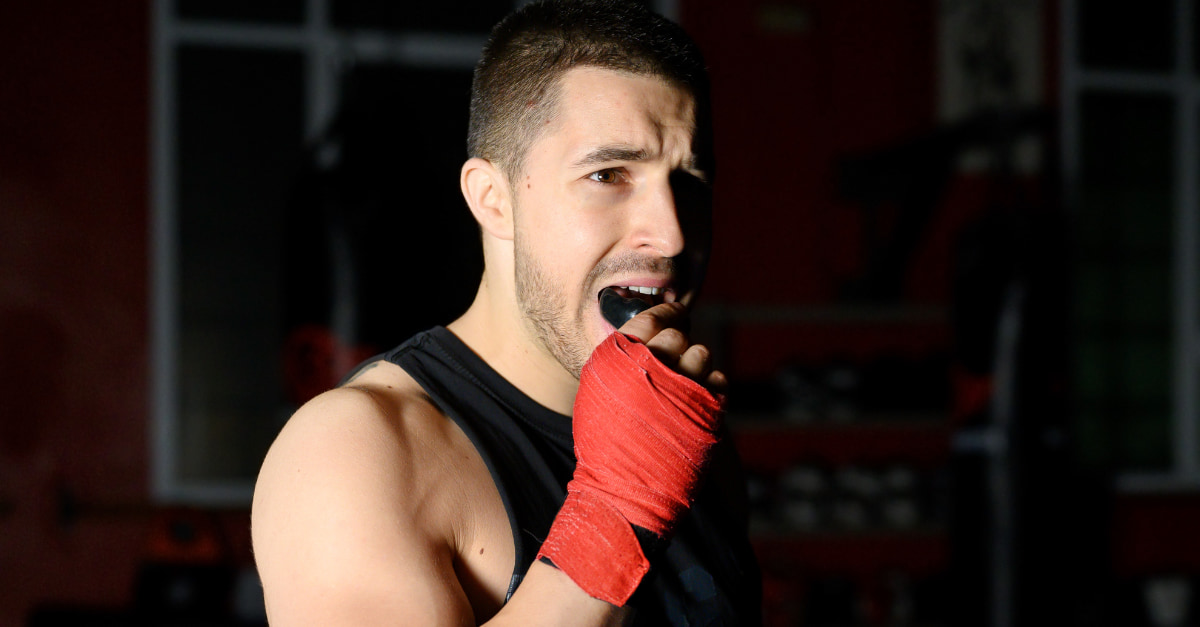
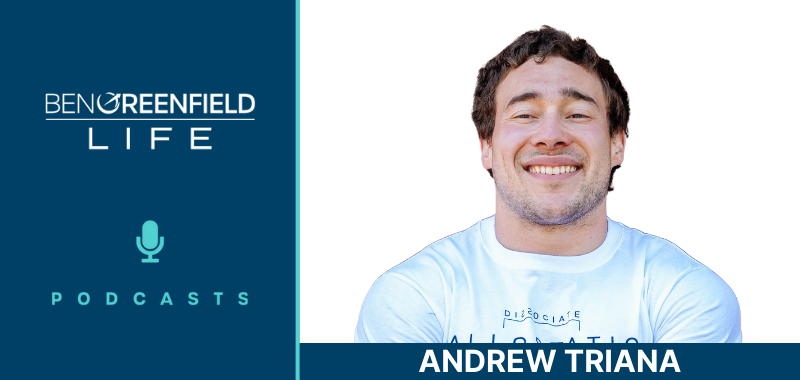











“Interesting article on the benefits of resisted breathing and hypoxic training for improving lung strength and endurance. The author provides helpful insights and tools for incorporating breath training into a daily routine. Definitely worth a read for athletes and fitness enthusiasts looking to enhance their performance and overall health.” I would like to request everyone to visit here for the best quality fitness-related products.
I have a Relaxator and love it and use it all the time. Probably the simplest/cheapest/most effective of the devices shown.
Is the description for #6 correct? Seems like the write up could be for a different product..
Hello, thank you for the 10 Tools.
What do you think about measuring the respiration rate while using the tools to see the vital data in front of you and how do you performe and optimize your breathing rate over a longer time span?
Thank you!
Stefanie Stebegg
Have. COPD
What about a device called
Expand a Lung